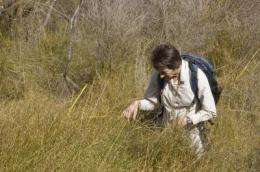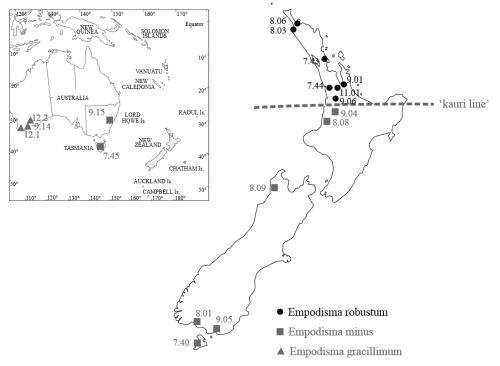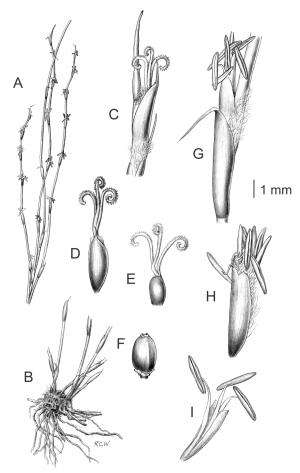A new species of wirerush from the wetlands in northern New Zealand

The northern part of the North Island of New Zealand is marked at approximately 38° S latitude by a distinct ecological boundary known as the "kauri line". This region forms the southern distributional limit of many plants and is the warmest part of New Zealand. A number of endemic plants are found there. Ecologists have recently discovered a new species of wirerush from peatlands north of the "kauri line".
Wetlands serve vital ecological functions by providing wildlife habitat, carbon storage, nutrient regulation and water balance. New Zealand has a number of wetland types. The peat-forming wetlands are dominated by a plant commonly known as wirerush (Empodisma, Restionaceae). The name Empodisma is derived from a Greek word meaning "to hinder". Both the common and the Greek name describe its dense scrambling growth form. Empodisma is in the southern hemisphere family Restionaceae.

The horizontal root systems of wirerush branch profusely forming finely divided rootlets with long-lived root hairs. In wirerush bogs, the underlying peat is formed largely from the remains of the root systems, stems bases and trapped plant litter. The peat mass absorbs water like a sponge. In peat bogs, incoming rainfall and atmospheric particles are the only source of nutrients. These are removed from the flow of water in the porous upper layers of peat. This may be an adaptive feature in nutrient-poor environments such as peat bogs.

Steve Wagstaff and Beverly Clarkson recognize three species of wirerush including the newly described species Empodisma robustum. Empodisma robustum is only found in peatlands in northern New Zealand, whereas E. minus is found in central and southern New Zealand and eastern Australia, and E. gracillimum is restricted to western Australia. Their study provides an account of the origin, diversification and ecology of the genus with descriptive keys and illustrations.
More information: Wagstaff SJ, Clarkson BR (2012) Systematics and ecology of the Australasian genus Empodisma (Restionaceae) and description of a new species from peatlands in northern New Zealand. PhytoKeys 13: 39-79. doi: 10.3897/phytokeys.13.3259
Provided by Pensoft Publishers
















